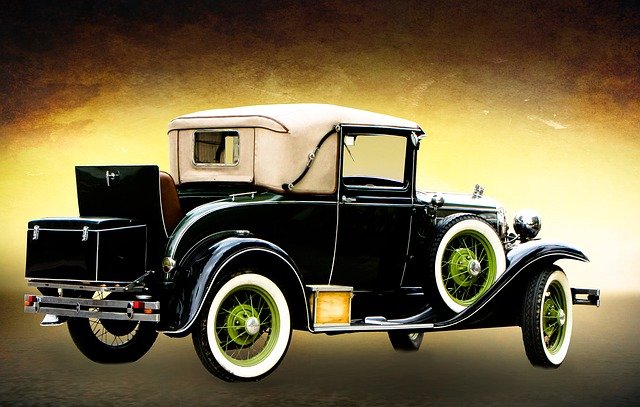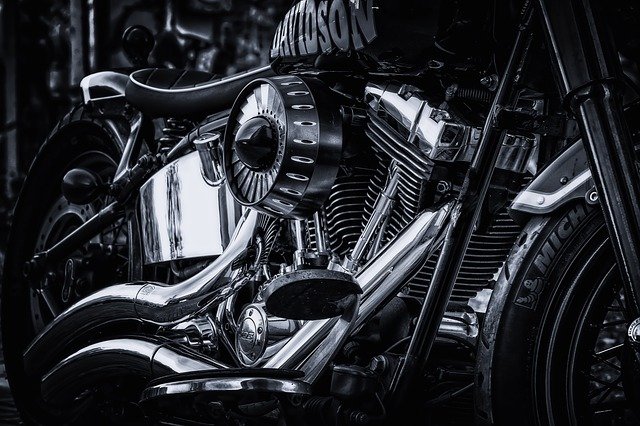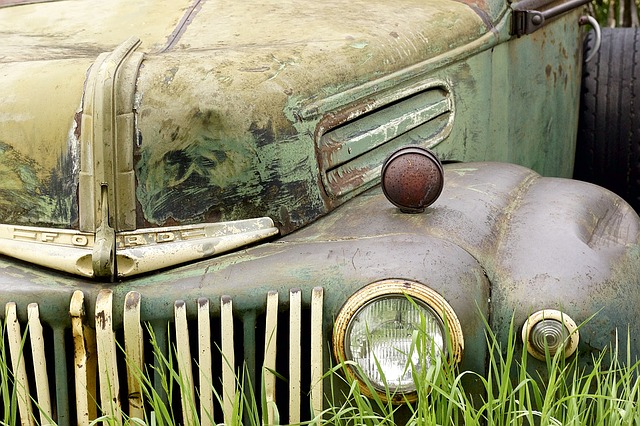Rules regarding proper display of vehicle licence plates – Behind the Wheel – Castanet.net
Tim Schewe – Mar 15, 2022 / 4:00 am | Story: 362829
Photo: Twitter
The humble licence plate has but one job, to positive identify the vehicle it is attached to.
Without license plates, how would we know who owns the vehicle? How would you complain about an erratic driver or report your stolen vehicle? Intersection Safety Camera (ISC) enforcement and Automated Licence Plate Recognition (ALPR) would be stymied and even the lowly parking ticket would have difficulty.
Most B.C. vehicles are issued with two licence plates. Also called number plates, these must be attached “one plate to the front and one plate to the rear of the vehicle.”
In some cases, ICBC will only issue one plate. Motorcycles, trailers and demonstration plates are the three most common examples of this.
Effective May 1, ICBC will no longer issue licence plate validation decals. This change came about to facilitate on-line renewal of licences and insurance. You may remove the validation decal after that date if you wish to.
To support the transition, B.C. is making a one-time, $1 million investment in enhancing the ALPR program to help law enforcement identify uninsured drivers without relying on the decals.
Licence plates must be visible. A number plate must be kept entirely unobstructed and free from dirt or foreign material, so that the numbers and letters on it may be plainly seen and read at all times and so that the numbers and letters may be accurately photographed using a speed monitoring device or traffic light safety device.
Bicycle racks seem to be the most common obstruction, but anything that gets in the way could result in a $230 fine.
A licence plate must be mounted horizontally unless it is attached to a motorcycle. Then it may be attached in vertical position on the left front fork of a motorcycle, with the first number or letter at the bottom of the fork.
The rear licence plate must be illuminated by a lamp that is capable of displaying only white light so that the numbers on the licence plate are legible from a distance of 15 metres to the rear of the vehicle. The lamp must not project light to the rear and must be marked SAE / DOT L.
Rules for license plates on vehicles licensed under the Off Road Vehicle Act are similar to those for on-road vehicles. Two exceptions are that no licence plate light is required and the plate may be displayed on the front, rear or left side of the vehicle.
Some vehicle owners try to excuse their choices, particularly with regard to the front licence plate.
Some says it looks ugly, or there isn’t a mounting bracket or the bolts are too rusted. They throw it on the dash, wire it onto the bumper, slap decorations over top, the list seemed endless.
None are legal justifications to avoid a ticket.
Tim Schewe – Mar 8, 2022 / 4:00 am | Story: 362123
Photo: Contributed
Intersections are dangerous places.
Yielding the right-of-way is probably the main concern, but the path you travel through and intersection is just as important. Some drivers are so sloppy with their technique they activate the traffic signals by driving over the detection loops in the oncoming lane when they exit the intersection!
As you approach an intersection, your ability to turn may be controlled by signs and pavement markings.
Scan for these signs and markings, and be prepared before you arrive at the intersection. They are not suggestions. You must follow their directions. It is possible the turn you hope to make will not be permitted.
If you are turning right at an intersection, you must approach and exit as close as practicable to the right hand curb or edge of the roadway. If there is no curb, remember that the roadway ends at the solid white line on the right, or if there is no solid white line, then the edge of the pavement.
Turn into the first available lane on the right.
Many drivers tend to use the shoulder to the right of the solid white line as another lane. This is both unsafe and illegal.
Learn to Drive Smart, our provincial driver’s manual, explains a special circumstance involving roads with restricted lanes.
“The driver has seen the warning sign indicating that there is a reserved lane on the street the driver wishes to turn onto. The driver should turn into the lane next to the reserved lane, unless they are entitled to drive in the reserved lane and wish to drive in it. To turn right off of a street with a reserved lane, change lanes into the reserved lane where permitted and when safe.”
If you are turning left at an intersection, you must approach in the lane nearest to the centre line, remaining to the right of the centre line as you enter. Exit the intersection into the lane closest to the centre line keeping to the right of the line.
Turn into the first available lane for your direction of travel.
If possible, make the turn to the left of the centre of the intersection. This will allow traffic from both directions to make left turns without meeting each other in the middle.
The term “as close as practicable” is mentioned in the legislation governing turns. Cars and pickup trucks can usually follow the turn radius the intersection size allows. Swinging wide in the manner of a longer vehicle to anticipate a turn is not an option for these drivers.
Some intersections allow multiple lanes to turn right or left. If this is allowed, follow the lines and signs for the lane that you are in. Enter and exit the intersection using the same lane.
Tim Schewe – Mar 1, 2022 / 4:00 am | Story: 361356
Photo: Contributed
I never know what I am going to receive in my e-mail regarding this column.
Recently, it was a tongue-in-cheek request to save a marriage by settling a question about U-turns between husband and wife. Neither realized there are really very few places in British Columbia where a driver can legally make a U-turn.
Section 168 of the Motor Vehicle Act (MVA) regulates making U-turns, also known as a “reverse turn.”
First of all, if there is any type of line painted down the centre of the highway, one must not make a U-turn over it. It doesn’t matter if it is double solid, single solid, solid and broken or a single broken line. Only the complete absence of a line allows the maneuver, subject to other limitations.
Section 155 of the MVA regulates crossing lines painted on the road and, in general, only allows crossing them to pass another vehicle or in some cases to avoid an obstruction.
Next, a U-turn must not be made where visibility is limited or it would be unsafe to do so. That includes places like (road) curves or at the approach to the crest of a hill.
U-turns are forbidden in a business district unless the turn is made at an intersection without traffic lights. However, the general prohibition of a U-turn at any intersection with traffic lights doesn’t apply if there is a sign posted by the municipality permitting the action.
Page 52 of the Learn to Drive Smart guide defines a “business district” as the territory contiguous to a portion of a highway having a length of 200 metre, along which there are buildings used for business, industrial or public purposes occupying: (a) at least 100 m of frontage on one side of that portion or (b) at least 100 m collectively on both sides of that portion, and includes that portion of the highway.
Finally, as we’ve mentioned municipalities, they are allowed to regulate U-turns within their boundaries through bylaws. These bylaws can range from what has been outlined here to a total prohibition.
This just adds to the difficulty because bylaws change from municipality to municipality.
Tim Schewe – Feb 22, 2022 / 4:00 am | Story: 360732
Photo: Contributed
I watched the drivers on either side of me the other morning, on my way to work.
We were stopped waiting for a red light and I could see that both of them were totally focused on the that light. Neither moved their heads, and both immediately moved when the light turned green.
What a wonderful example of blind faith.
The two most likely sources of conflict for a driver facing a traffic light that changes to green are drivers who speed up on the yellow (light) to beat the red light on the cross street and drivers who turn left from the oncoming lanes.
Drivers who speed up approaching a yellow light are choosing to increase the risk that they will run the light if they misjudge and it turns red. Drivers who proceed on the green without doing a 180-degree scan of the intersection first are inviting a broadside or “T-bone” collision.
This type of collision is likely to result in severe injury for the passengers on the side of the vehicle that is struck.
The first thing to do is pause for an instant. Remember, you must yield to cross traffic that is still in the intersection.
Look left, look right and insure that cross traffic is coming to a stop. This is the 180-degree scan. Having done that, look left again and then move your foot from the brake to the accelerator if the way is clear. It never hurts to supplement faith with a bit of caution.
This same practice of looking left and right should also take place before you enter an intersection where you have a stale green light. Similarly, if there are no traffic lights and cross traffic has a stop sign—look left, right and left again.
Yes, cross traffic is supposed to come to a stop when the light for you changes to green. You can probably get by believing they will until someone makes a mistake or willfully disobeys the light.
Blindly hitting the throttle as soon as the light changes to green doesn’t seem like such a good idea now, does it?
Finally, you don’t have to be a driver to exercise the left, right and left again scan. A pedestrian stepping into a crosswalk would be wise to do this before stepping off the curb.
Many drivers don’t like to stop before turning right on a red light and are probably looking left for cross traffic rather than looking right for you.
Source: https://www.castanet.net/edition/news-story-362829-900-.htm




